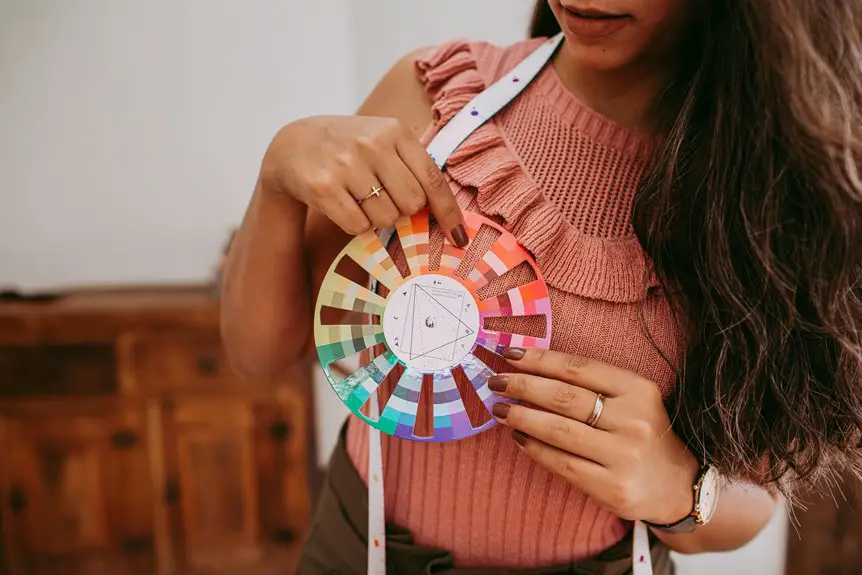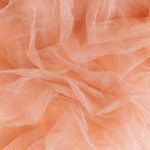You’ll love sheer and ultra-lightweight gauze-like fabrics for their breathable, airy feel that keeps you cool and comfortable. These fabrics, like cotton gauze, silk chiffon, and polyester voile, offer delicate transparency and soft draping perfect for summer clothes, scarves, or light curtains. Handling them gently with fine needles and minimal pins preserves their beauty. Want to explore the best uses, types, sewing tips, and styling ideas to make these fabrics truly shine?
Table of Contents
Key Takeaways
- Sheer and gauze-like fabrics are lightweight, breathable, and semi-transparent, ideal for warm weather and layering.
- Common types include cotton gauze, silk chiffon, polyester voile, linen gauze, and rayon blends, each offering unique textures and durability.
- These fabrics are best used for summer dresses, scarves, curtains, lingerie, and layering pieces due to their soft, airy qualities.
- Sewing requires fine needles, short stitches, minimal pinning, and tissue paper support to prevent damage and maintain fabric stability.
- Styling tips include layering sheer tops over vibrant camisoles, pairing gauzy skirts with structured jackets, and balancing sheerness with tailored pieces.
Characteristics of Sheer and Gauze-Like Fabrics
Although sheer and gauze-like fabrics look delicate, they offer unique qualities that make them highly versatile. You’ll notice their lightweight structure allows air to flow freely, keeping you cool and comfortable in warm weather.
Their transparency creates an elegant, ethereal appearance, perfect for layering or adding subtle texture to your outfit. These fabrics often have a slightly crinkled or open weave, giving them a soft, breathable feel while maintaining durability.
Sheer fabrics offer an elegant, airy look with soft texture and breathable durability, perfect for layering.
When you handle them, you’ll find they drape beautifully, enhancing movement without adding bulk. Plus, their delicate texture means you’ll want to treat them gently, but their resilience surprises many.
These characteristics combine to make sheer and gauze-like fabrics ideal for fashion, home décor, and more.
Common Types and Fiber Content
When you explore sheer and ultra-lightweight fabrics, you’ll find a variety of common types, each with distinct fiber content that influences their feel and performance.
For instance, cotton gauze offers breathability and softness, making it comfortable against your skin. Silk chiffon provides a smooth, luxurious texture with a subtle sheen, thanks to its natural protein fibers.
Polyester voile mimics natural fibers but adds durability and wrinkle resistance, ideal for easy care. Linen gauze brings a crisp, airy quality but wrinkles more easily.
Rayon and blends are also popular, combining softness and drape with affordability. Understanding these fiber differences helps you choose fabrics that meet your tactile preferences and care needs, ensuring your projects have the right balance of texture, weight, and durability.
Best Uses for Lightweight Sheer Fabrics
Since lightweight sheer fabrics offer breathability and delicate textures, you’ll find them perfect for layering in warm-weather clothing and creating elegant, flowing garments.
They add a soft, ethereal quality without weighing you down. Here are four ideal uses for these fabrics:
- Summer dresses and blouses: Sheer fabrics keep you cool while enhancing style.
- Scarves and shawls: Their lightness makes them comfortable accessories.
- Curtains and drapes: They filter light gently, adding a dreamy ambiance.
- Lingerie and sleepwear: The softness feels luxurious against the skin.
Tips for Sewing and Handling Delicate Textiles
Using lightweight sheer fabrics can create beautiful, airy garments, but their delicate nature demands careful handling.
When sewing, always use a fine needle—size 60/8 or 70/10 works best—to avoid damaging the fibers. Choose a straight stitch with a shorter stitch length for stronger seams that won’t pucker. Pin sparingly or use fabric clips to prevent leaving marks or holes.
Support the fabric with tissue paper underneath while sewing to keep it stable and prevent slipping. Avoid pulling or stretching as you sew; instead, guide the fabric gently through the machine.
Press seams carefully on a low heat setting with a pressing cloth to avoid scorching. Finally, hand wash or use a gentle cycle with mild detergent to maintain the fabric’s delicate quality over time.
Styling Ideas to Showcase Sheer and Gauzy Materials
Although sheer and gauzy fabrics can feel delicate, you can effortlessly create striking looks by layering them over solid pieces or combining them with structured garments.
To make the most of these ultra-lightweight materials, consider these styling ideas:
- Layer a sheer blouse over a bold-colored camisole to add depth without overwhelming your outfit.
- Pair a gauzy skirt with a fitted leather jacket for an edgy yet feminine contrast.
- Use sheer scarves or wraps as accessories to introduce texture without bulk.
- Combine sheer dresses with tailored blazers and ankle boots for a chic, modern vibe.
These approaches help you showcase the airy beauty of sheer fabrics while maintaining balance and style in your ensemble.
Frequently Asked Questions
How Do Sheer Fabrics Hold up to Frequent Washing?
Sheer fabrics can be delicate, so you’ll want to wash them gently. Use cold water, a mild detergent, and a mesh bag. Avoid frequent washing to keep them from wearing out quickly or losing shape.
Are Sheer Fabrics Suitable for Outdoor Use?
You might think sheer fabrics aren’t fit for outdoors, but they can work if you’re careful. They’re delicate, so avoid harsh weather and prolonged sun exposure to keep them looking great and lasting longer.
Can Sheer Fabrics Be Dyed at Home?
Yes, you can dye sheer fabrics at home. Just make sure to choose the right dye for delicate materials, follow instructions carefully, and handle the fabric gently to avoid damage or uneven coloring during the process.
What Is the Environmental Impact of Producing Gauze-Like Fabrics?
You should know producing gauze-like fabrics often uses significant water and energy, and chemicals can pollute ecosystems. Choosing organic or recycled materials and eco-friendly dyes can help reduce their environmental impact considerably.
How Do Sheer Fabrics Perform in Extreme Weather Conditions?
Sheer fabrics act like whispers against the wind; they won’t shield you well in extreme cold or rain but breathe easy in heat. You’ll need layers to stay cozy or dry when weather turns fierce.
- What Is Lyocell Spandex Fabric? The Perfect Blend of Soft and Stretchy - July 14, 2025
- Lyocell vs. Modal: Which Eco-Friendly Fabric Is Superior? - July 14, 2025
- How to Get Grease Out of Lyocell Clothing and Sheets - July 14, 2025






